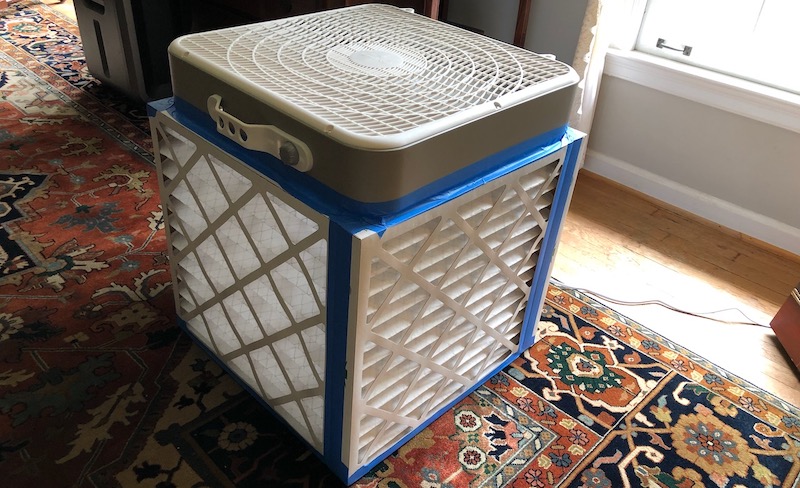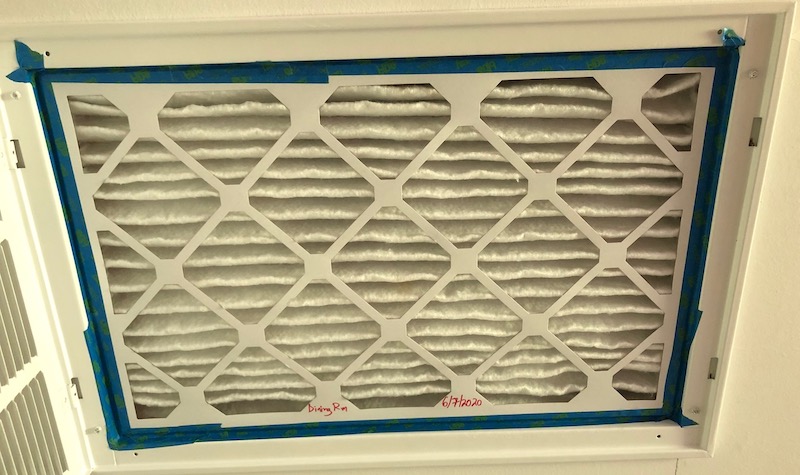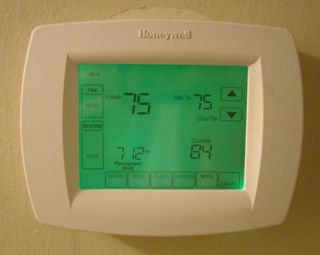3 Ways to Get Cleaner Indoor Air With Filtration

So you want to have better indoor air quality at home but you aren’t sure what to do. If you read my last article, you know you shouldn’t buy an electronic air cleaner. Instead you should stick with the tried-and-true methods of source control, filtration, and ventilation. With that as our starting point, today I give you three ways you can use filtration to improve your home’s IAQ. I’ll do source control and ventilation later.
Use a standalone high-MERV or HEPA air cleaner
This is the easiest and (probably) least expensive of the options. You can make one yourself with a box fan and MERV-13 filters, and I’ve provided detailed instructions on how to do so in this article on the Comparetto Cube (a variation on the Corsi/Rosenthal air cleaner).
If you’d rather buy one, make sure to check out the details. The world of air cleaners is full of tricky language and air cleaners that do more than one thing. Find one that does only filtration and doesn’t add ions, hydrogen peroxide, or any of the other things that electronic air cleaners do. Then check out the clean air delivery rate (CADR) and noise ratings. The CADR should several hundred cubic feet per minute to be effective.
The noise level is measured in decibels, dB(A). The Comparetto Cube has noise levels in the low 50s, mid 50s, and about 60 when the fan is on low, medium, and high. The low 50s is noticeable but tolerable. Once you get into the mid 50s, the noise becomes annoying.
Use high-MERV filters in the heating and cooling system
First, a word of caution. Do NOT just change out a one inch fiberglass filter (MERV-2) with a high-MERV pleated filter. You could create some unintended consequences that can damage your heating and cooling system or even put carbon monoxide in your home.

The heating and cooling system in my house is a ducted mini-split heat pump with two air handlers. Both have MERV-13 filters. All three filters have a low pressure drop because I sized them properly. When you do it this way, the high-MERV filters will do a great job of cleaning your indoor air without causing problems.
Run the blower continuously with high-MERV filters
Again, I’ll start with some cautions. Setting your thermostat to keep the fan in the “on” position can raise the humidity in your home in summer. If you live in a humid climate, leave the fan set to “auto” when the humidity is high. Another thing that could causes problems if you keep the fan running continuously is ducts in unconditioned space. If the ducts aren’t sealed tight, you’ll get more duct leakage. You’ll also have higher energy bills not just from running the fan more but also because you’re running room temperature air through ducts in unconditioned space.

Now, if your house is a good candidate, here’s why setting the fan to “on” can help. One of the reasons many filters don’t do a good job is that the heating and cooling system doesn’t run enough. With little runtime, a problem especially in spring and fall, even high-MERV filters won’t help because not enough air goes through them. By putting the thermostat fan setting to “on” you can get more filtration and do more cleaning.
The three methods described here all rely on recirculating the indoor air. When done properly, all can result in cleaner indoor air. They don’t remove all the bad stuff from your indoor air, though. Gases like nitrogen oxides, carbon monoxide, or volatile organic compounds (VOCs) pass right through fibrous media filters. You need source control or ventilation to deal with those.
Still, if you do it right, you can count on your high-MERV or HEPA filters to remove the fine particles (PM2.5) that are one of the most concerning indoor air pollutants. They also remove other particles of concern, like the particles that carry viruses or bacteria, mold spores, and pollen.
Next week I’ll cover two good ways to use ventilation and filtration together to improve your indoor air quality.
Allison Bailes of Atlanta, Georgia, is a speaker, writer, building science consultant, and founder of Energy Vanguard. He is also the author of the Energy Vanguard Blog and is writing a book. You can follow him on Twitter at @EnergyVanguard.
Related Articles
2 Reasons to Avoid Most Electronic Air Cleaners
How to Make a High-MERV DIY Portable Air Cleaner
The Path to Low Pressure Drop Across a High-MERV Filter
This Thermostat Setting Can Cost You Money and Make You Sick
NOTE: Comments are moderated. Your comment will not appear below until approved.
This Post Has 4 Comments
Comments are closed.

I place my box fan filter by the return so the system inhales cleaner airflow.
That’s a good way to distribute the clean air, Bruce! And it’s great for houses where the system wasn’t designed for high-MERV filtration.
Would this work as well with the airflow reversed?
I’m thinking if the unfiltered air is blown into the box and exits via the filters, any particles will accumulate on the inside, rather than on outside surfaces where they may be dislodged.
Steven, yes, it does work well that way, too. We’ve built several for our office and my home and have done them both ways. It changes the air flow patterns in the room but it still cleans the air.
Here are two articles written by Jim Rosenthal, who, I believe, is the first one to make a box with multiple filters to attach to the box fan:
https://www.texairfilters.com/a-variation-on-the-box-fan-with-merv-13-filter-air-cleaner/
And here’s a modification he came up with to improve air flow even more:
https://www.texairfilters.com/how-to-improve-the-efficiency-of-the-box-fan-and-merv-13-filter-air-cleaner/